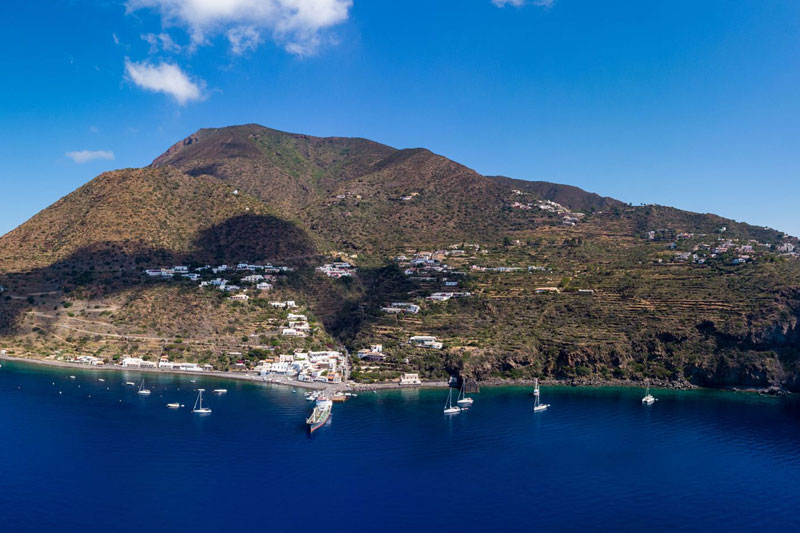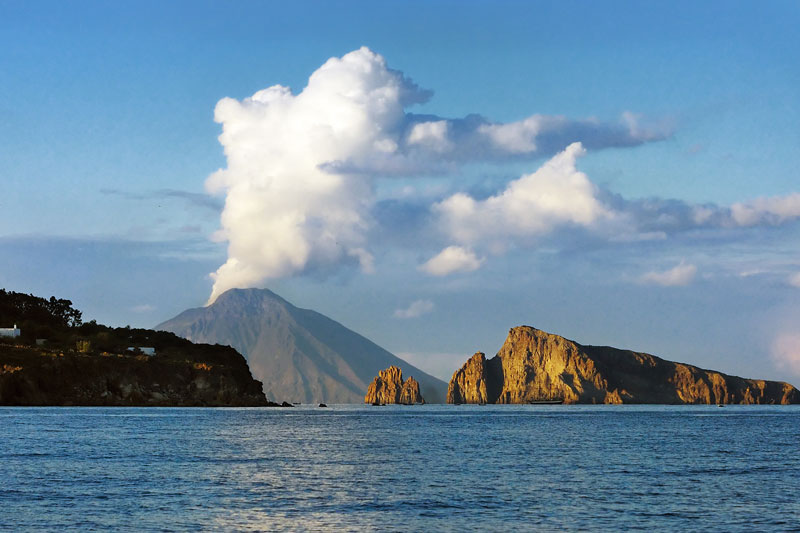Chic Panarea is the prettiest of the islands, while the quietest are rocky Filicudi with its great cliffs and grottos and Alicudi.
On historic Lipari you’ll find spa baths, a Roman sauna cave, plenty of shops and restaurants and lively bars as well as a pumice quarry where some of the produce simply floats away. Outlying Stromboli is famous for its active crater in a near-perpetual state of eruption – spectacular at night. Just to the south lies Sicily.
Everyone should see Palermo, the capital, with its dramatic blend of architecture from the many cultures that have ruled here. Baroque splendour flourishes, as do dusty museums and boisterous markets, but one should be aware of the darker side of this polluted, edgy, chaotic and sometimes dangerous city, so stop awhile, see the sites and move on.
Itinerary – Sicily & Aeolian Islands

Day 1 – Portorosa Marina
An elegant facility that developed in the eighties thanks to the futuristic idea of individuals who invested in the dredging of a semi-marshy area in the town of Furnari close to the beach and the clear water of the Southern Tyrrhenian Sea, not far from the natural reserve of Tindari and the Aeolian Islands. The marina extends for a maximum length of 4000 meters and offers about 650 moorings for vessels from 6 to 35 meters. Those who land at Portorosa will find a Caribbean atmosphere, with houses and apartments overlooking navigable canals and natural routes.
Day 2 – Vulcano
With its visibly smoking crater and vile sulphurous fumes, Vulcano makes an indelible first impression. The island's volcanic nature has long been impressing visitors: the ancient Romans believed it to be the chimney of the fire god Vulcan's workshop, and today it remains famous for its therapeutic mud baths and hot springs. The main drawcard, however, remains the Fossa di Vulcano (Gran Crater), the steaming volcano that towers over the island's northeastern shores.


Day 3 – Filicudi
Filicudi is still considered remote today, even by the inhabitants of Lipari. This feeling of remoteness is not a question of distance but something deeper: it is a difference of time and of the way of life of the island and its people, a remoteness from the everyday world.
Day 4 – Salina
In delightful contrast to the exposed volcanic terrain of the other Aeolians, Salina − the archipelago's second largest island − boasts a lush, verdant landscape thanks to its natural freshwater springs. Woodlands, wildflowers, thick yellow gorse bushes and serried ranks of grape vines carpet its hillsides, while high coastal cliffs plunge into the breaking waters below.


Day 5 – Stromboli
For many the most captivating of the Aeolians, Stromboli conforms perfectly to one's childhood idea of a volcano, with its symmetrical, smoking silhouette rising dramatically from the sea. It is a hugely popular day-trip destination, but to best appreciate its primordial beauty, languid pace and the romance that lured Roberto Rossellini and Ingrid Bergman here in 1949, you will need to give it at least a couple of days. Volcanic activity has scarred and blackened much of the island, but the northeastern corner is inhabited, and it is here that you will find the island's famous black beaches and the main settlement sprawled attractively along the volcano's lower slopes. Despite the picture-postcard appearance, life here is tough: food and drinking water must be ferried in, there are no roads across the island, and until relatively recently there was no electricity in Ginostra, the diminutive second settlement on Stromboli's west coast.
Day 6 – Lipari
Lipari is the largest, busiest and most accessible of the Aeolian Islands. Visitors arriving from the mainland will likely experience it as a relaxing introduction to island life; on the other hand, if you have just come from the outer Aeolians, it may feel a bit like a big city!
The main focus is Lipari Town, the archipelago's principal transport hub and the nearest thing that islanders have to a capital city. A busy little port with a pretty, pastel-coloured seafront and plenty of accommodation, it makes the most convenient base for island-hopping. Away from the town, Lipari reveals a rugged and typically Mediterranean landscape of low-lying macchia (dense Mediterranean shrubbery), silent, windswept highlands, precipitous cliffs and dreamy blue waters.

